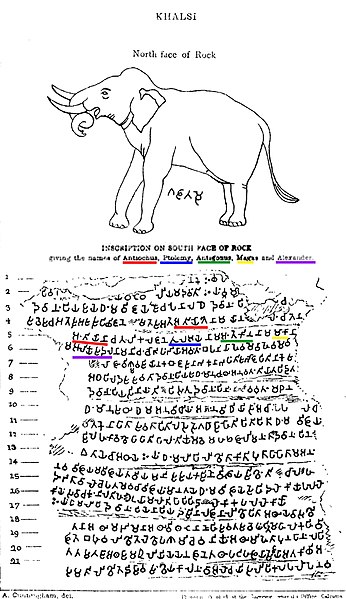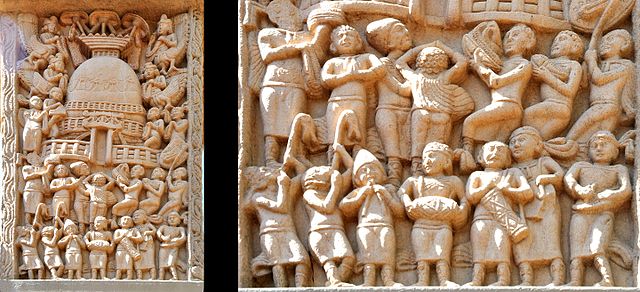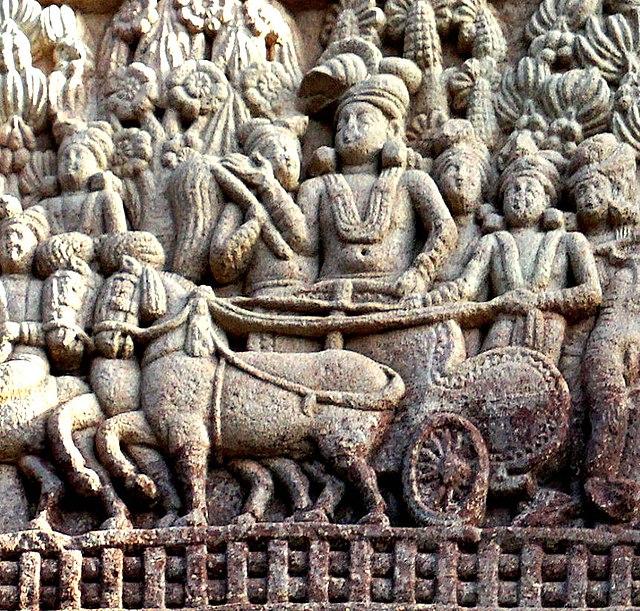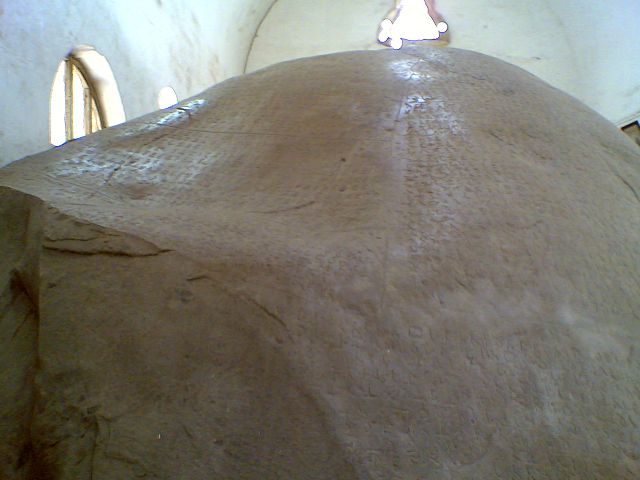The word Yona in Pali and the Prakrits, and the analogue Yavana in Sanskrit and Yavanar in Tamil, were words used in Ancient India to designate Greek speakers. "Yona" and "Yavana" are transliterations of the Greek word for "Ionians", who were probably the first Greeks to be known in India.
Territories "conquered by the Dharma" according to Major Rock Edict No.13 of Ashoka (260–218 BCE).
The Khalsi rock edict of Ashoka, which mentions the Greek kings Antiochus, Ptolemy, Antigonus, Magas and Alexander by name (underlined in colour). Here the Greek rulers are described as "Yona" (Brahmi: 𑀬𑁄𑀦, third and fourth letters after the first occurrence of Antigonus in red).
Dedication by a man of Greek descent on a wall of Cave 17 in the Nasik Caves (photograph and rubbing). Detail of the "Yo-ṇa-ka-sa" word (adjectival form of "Yoṇaka", Brahmi: 𑀬𑁄𑀡𑀓𑀲), with Nasik/Karla-period Brahmi script for reference. Circa 120 CE.
Foreigners on the Northern Gateway of Stupa I.
Ashoka, popularly known as Ashoka the Great, was the third Mauryan Emperor of Magadha in the Indian subcontinent during c. 268 to 232 BCE. His empire covered the largest part of the Indian subcontinent, stretching from present-day Afghanistan in the west to present-day Bangladesh in the east, with its capital at Pataliputra. A patron of Buddhism, he is credited with playing an important role in the spread of Buddhism across ancient Asia.
A c. 1st century BCE/CE relief from Sanchi, showing Ashoka on his chariot, visiting the Koliyas at Ramagrama.
Ashoka's Major Rock Edict at Junagadh contains inscriptions by Ashoka (fourteen of the Edicts of Ashoka), Rudradaman I and Skandagupta.
King Ashoka visits Ramagrama, to take relics of the Buddha from the Nagas, but in vain. Southern gateway, Stupa 1, Sanchi.
The Major Rock Edict No.13 of Ashoka, mentions the Greek kings Antiochus, Ptolemy, Antigonus, Magas and Alexander by name, as recipients of his teachings.








